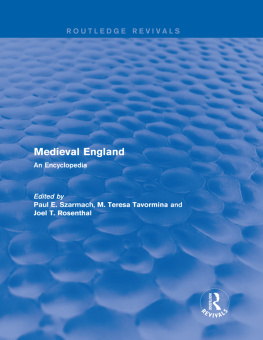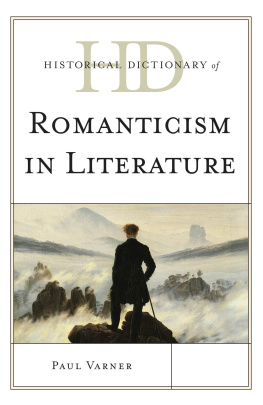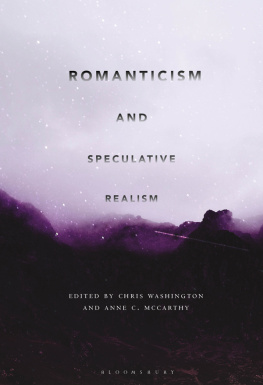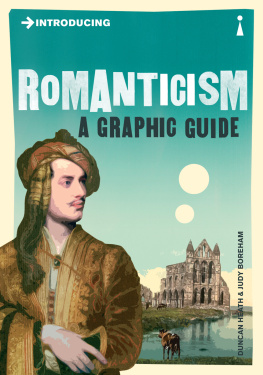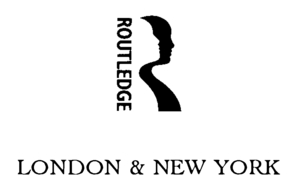Routledge Revivals
Encyclopedia of Romanticism
First Published in 1992, this encyclopedia is designed to survey the social, cultural and intellectual climate of English Romanticism from approximately the 1780s and the French Revolution to the 1830s and the Reform Bill. Focussing on the spirit of the age, the book deals with the aesthetic, scientific, socioeconomic indeed the human environment in which the Romantics flourished. The books considers poets, playwrights and novelists; critics, editors and booksellers; painters, patrons and architects; as well as ideas, trends, fads, and conventions, the familiar and the newly discovered. The book will be of use for everyone from undergraduate English students, through to thesis-driven graduate students to teaching faculty and scholars.
Encyclopedia of Romanticism
Culture in Britain, 1780s1830s
Edited by
Laura Dabundo
First published in 1992
by Routledge
This edition first published in 2010 by Routledge
Published 2014
by Routledge
2 Park Square, Milton Park, Abingdon, Oxon OX14 4RN
Simultaneously published in the USA and Canada
by Routledge
711 Third Avenue, New York, NY, 10017, USA
Routledge is an imprint of the Taylor & Francis Group, an informa business
1992 Laura Dabundo
All rights reserved. No part of this book may be reprinted or reproduced or utilised in any form or by any electronic, mechanical, or other means, now known or hereafter invented, including photocopying and recording, or in any information storage or retrieval system, without permission in writing from the publishers.
Publisher's Note
The publisher has gone to great lengths to ensure the quality of this reprint but points out that some imperfections in the original copies may be apparent.
Disclaimer
The publisher has made every effort to trace copyright holders and welcomes correspondence from those they have been unable to contact.
ISBN 13: 978-0-415-56330-7 (hbk)
ISBN 13: 978-0-203-09259-0 (ebk)
Encyclopedia of Romanticism
Culture in Britain, 1780s1830s
Encyclopedia of Romanticism
Culture in Britain, 1780s1830s
Laura Dabundo
Editor
Pamela Olinto, Greg Rider, Gail Roos
Editorial Assistants
For Linda Jordan Tucker
Friendship is a sheltering tree...
Coleridge
Contents
Because the Romantic period was so learned, diverse, and intellectually aware, an encyclopedia is an especially appropriate form for representing Romanticism in England. Indeed, it was during the English Ro mantic period that the encyclopedia acquired the form and even the function now associated with it: an eclectic, popular, and authoritative compilation of knowledge or information.
Perhaps what is the most familiar encyclopedia, the Britannica, began its long evolution in 1771 as a three-volume entrepreneurial venture produced by Andrew Bell, a Scot. Although he was inspired by the French Encyclopdistes, who published 35 volumes between 1751 and 1772, he and his colleagues wanted to avoid the scandal, notoriety, censorship, and political and religious reprisals that Diderot, the editor, endured for his critical approach to ideas and institutions, a criticism so pointed and effective that some say it contributed to the French Revolution. Consequently, Britannica, like all encyclopedias that followed, reflected rather than shaped conventions; it was produced on largely historical principles, a conservative representation of contemporary human knowledge, including its limitationsthe tendency of the Britannica, for example, was to mix, not always consciously, popular superstition along with actual information, providing access to the interesting misconceptions of the period.
Over the years, it became more factual, more comprehensive, and more popular, one of the most successful publishing ventures in the Western world. Spanning Wordsworth's lifetime, for example, it went through eight editions. Nor was it the only encyclopedia: the lesser but equally popular Perthensis was published in 12 volumes from 1796 to 1806, and the Pantalogia also ran to 12 volumes between 1802 and 1813. Coleridge objected to the alphabetical arrangement of encyclopedias and designed a complicated philosophical system which he believed more nearly represented the categories and relationships of human knowledge, which he explained in an essay called On Method. It was adapted as the Introduction to Encyclopedia Metropolitan, which took 28 years to produce, from 1817 to 1845, so that many of the entries were outdated by the time it appeared and the system too complicated to use. It was one of the few that failed.
From the speed at which these encyclopedias appeared, their range, and their diversity, it was clear that not only was knowledge expanding but so was the reading public, the publishing industry that served it, its marketing skills, and the capacity for distribution. It was essentially the same reading public that made Scott wealthy, Byron famous, and Southey, who could write in almost any form, productive. But it was also a public that depended on encyclopedias because there was no universal system of education and the existing institutions were so poor that people graduated from universities with little education. Even in its mix of folklore and fact, the encyclopedias, appearing frequently and often updated, offered the best education there was, in the form of self-education, with bibliographic citations enabling the reader to consult the original authorities. (See also Richard Altick, English Common Reader, and Robert Lewis Collison, Encyclopedias: Their History Throughout the Ages .)
To us now, the encyclopedias produced during the Romantic period offer a rare insight into the minds of literate people during the period, their biases, assumptions, tastes, perspectives, priorities, as well as what they knew. Similarly, this encyclopedia, assembled so resourcefully and carefully by Laura Dabundo, is as much a reflection of our age, the way it views the Romantic tradition, as it is a reflection of the English Romantic period. Topics such as Jeremy Bentham, pantomime, and geology probably would not have appeared even 20 years ago, when the primary scholarly effort was devoted to defining Romanticism and finding single unifying characteristics or ideas limited to certain major poetic figures. Fortunately, a more historically oriented criticism has required us to know more, and new historical concerns with previously forgotten events, neglected individuals, and overlooked ideas have produced more information for us from untapped sources. The contemporary approach to Romanticism recognizes that it is a far more complex movement than merely a return to nature or a revival of interest in the Middle Ages, as it was characterized, say, 30 years ago, that it contains contradictions, diversity, and fragmentation. When the information, the organization, and the topics in this encyclopedia are themselves transcended by time and taste, the work itself, I believe, will remain a monument to this period in Romantic studies.
Marilyn Gaull
I Live not in myself, but I become
Portion of that around me...
Byron, Childe Harold

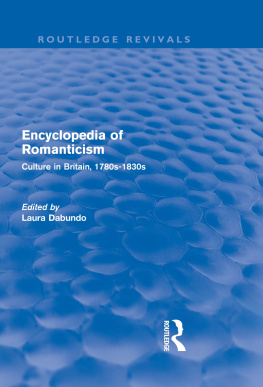

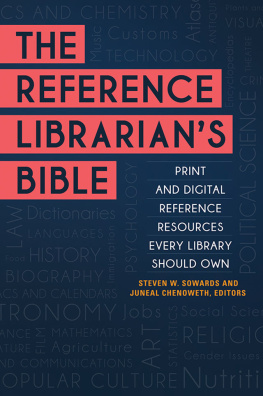
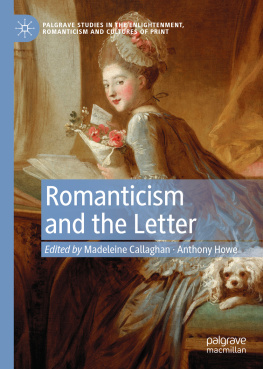

![Mark J. P. Wolf (editor) - Encyclopedia of Video Games: The Culture, Technology, and Art of Gaming [3 volumes]](/uploads/posts/book/279290/thumbs/mark-j-p-wolf-editor-encyclopedia-of-video.jpg)
